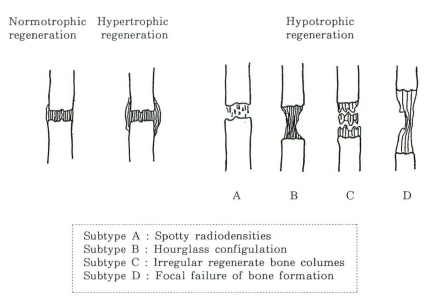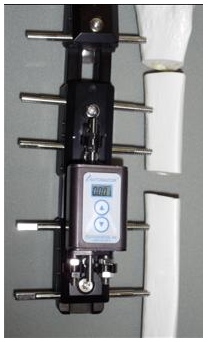Me: The collaborator of the project at one point gave me a list of ideas and subjects we had to do more research on and one of them was cell condensation for the progenitor cells of chondrocytes. This is a quick attempt by me to go through the most basic points of cell condensation.
Note: In chondrogenesis , the condensation stage precedes the creation of the prechondroblasts, but in osteogenesis the preosteoblasts stage precedes the condensation stage. Phase a and b also contribute to chondroblast differentiation.
As stated in the first article abstract….
“”Condensations form following activation of at least three pathways:
- 1. Initiation of epithelial-mesenchymal interactions by tenascin, BMP-2, TGF beta-1 and Msx-1 and -2.
- 2. Up-regulation of N-CAM by activin.
- 3. Up-regulation of fibronectin by TGF-beta, further enhancing N-CAM accumulation. (Note: Syndecan blocks fibronectin and so blocks N-CAM accumulation)
It is by these three pathways that condensations are initiated and grow.””
Extracellular matrix molecules, cell surface receptors and cell adhesion molecules, such as fibronectin, tenascin, syndecan, and N-CAM, initiate condensation formation and set condensation boundaries
So let’s try to put the entire process of cell condensation together
1. epithelial-mesenchymal interactions that precede condensation – characterized by expression of Hox genes, growth factors (TGF-beta and BMP-2) and the cell surface proteoglycan receptor, syndecan-1. versican, syndecan-3 and tenascinare present in low concentrations.
2. condensation – Expression of Msx-1 and Msx-2, growth factors and syndecan. versican, syndecan-3 and tenascin are up-regulated during condensation. Hox genes(Hoxa-2, Hoxd-13)(through indirect cell adhesion path), transcription factors(Pax-1, fibronectin, hyaluronan and hyaladherin), growth factors (activin, BMP-4 and -5, GDF-5), cell adhesion molecules (N-CAM and N-cadherin) (through direct cell adhesion path) and proteoglycans are only expressed in this phase. mRNAs for collagen types II and IX and for the core protein of cartilage proteoglycan are up-regulated. Hox genes (Hoxd-11-13) and other transcription factors (CFKH-1, MFH-1, osf-2), modulate the proliferation of cells within condensations. Subsequent growth of condensations is regulated by BMPs, which activate Pax-2, Hoxa-2 and Hoxd-11 among other genes.
3. cell differentiation – Transcription factor Pax-1, fibronectin, hyaluronan and hyaladherin are expressed in the cell differentiation stage. Late in condensation and increasingly thereafter, the protein products of these genes (referring to all the genes in the condensation phase) accumulate aschondroblasts differentiate. Growth of a condensation ceases when Noggin inhibits BMP signalling, setting the stage for transition to the next stage of skeletal development, namely overt cell differentiation
I will try to highlight the parts which I felt are the most important.
From Source Link HERE
Int J Dev Biol. 1995 Dec;39(6):881-93.
Divide, accumulate, differentiate: cell condensation in skeletal development revisited.
Hall BK, Miyake T.
Source
Department of Biology, Dalhousie University, Halifax, Nova Scotia, Canada.
Abstract
Cell condensation is a pivotal stage in skeletal development. Although prechondrogenic condensations normally exist for some 12 h, duration can vary. Variation is seen both between condensations for different cartilages (Meckel’s vs. elastic ear cartilage) and within a single condensation from which more than one skeletal element will form, as in the three components of the single first arch chondrogenic condensation. Understanding how duration of the condensation phase is established–how the condensation phase is entered and exited during cell differentiation–remains a major area for future study. During chondrogenesis, cell-specific products such as collagen types II and IX and cartilage proteoglycan appear concomitant with condensation. Therefore, during chondrogenesis, condensation precedes commitment of cells as prechondroblasts. During osteogenesis, however, differentiation of preosteoblasts precedes condensation. Therefore, during osteogenesis, condensation amplifies the number of committed osteogenic cells. Further comparative analysis of skeletogenesis should provide us with a more rigorous understanding of cell commitment, when differentiation is initiated, how commitment and differentiation are measured and the relationship of condensation to onset of differentiation. Current knowledge of molecules characteristic of condensations focused attention on extracellular matrix and cell surface components on the one hand, and on growth factors homeobox genes and transcription factors on the other. We have drawn together the molecular data for pre-chondrogenic condensations in diagrammatic form in Figure 2. Three major phases of chondrogenesis are identified: (a) epithelial-mesenchymal interactions that precede condensation, (b) condensation itself, and (c) cell differentiation. Although we label the third phase differentiation, it is important to recognize that phases a and b also constitute aspects of chondroblast cell differentiation (see Dunlop and Hall, 1995 for a discussion of this point. The pre-condensation phase is characterized by expression of Hox genes, growth factors (TGF-beta and BMP-2) and the cell surface proteoglycan receptor, syndecan-1. Expression of Msx-1 and Msx-2, growth factors and syndecan continues into the condensation phase. Other molecules, such as versican, syndecan-3 and tenascin, present in low concentrations before condensation, are up-regulated during condensation. Yet other molecules–Hox genes, transcription factors, growth factors (activin, BMP-4 and -5, GDF-5), cell adhesion molecules and proteoglycans–are only expressed during the condensation phase, while the transcription factor Pax-1, fibronectin, hyaluronan and hyaladherin are expressed both during and after condensation. During condensation mRNAs for collagen types II and IX and for the core protein of cartilage proteoglycan are up-regulated. Late in condensation and increasingly thereafter, the protein products of these genes accumulate as chondroblasts differentiate (see Fig. 2 for details). Not all the molecules present before, during of after condensation can be placed into causal sequences. Some however can. In Figure 3 we summarize the causal sequences discussed in this paper as they relate to initiation of condensation and to transit from condensation to overt differentiation during chondrogenesis. Condensations form following activation of at least three pathways: (1) Initiation of epithelial-mesenchymal interactions by tenascin, BMP-2, TGF beta-1 and Msx-1 and -2. (2) Up-regulation of N-CAM by activin. (3) Up-regulation of fibronectin by TGF-beta, further enhancing N-CAM accumulation (Fig. 3). It is by these three pathways that condensations are initiated and grow. Transition from condensation to overt cell differentiation is under both positive and negative control (Fig. 3). Syndecan blocks fibronectin and so blocks N-CAM accumulation, preventing accumulation of additional cell
- PMID: 8901191 [PubMed – indexed for MEDLINE]
- Bioessays. 2000 Feb;22(2):138-47.
All for one and one for all: condensations and the initiation of skeletal development.
Hall BK, Miyake T.
Source
Department of Biology, Dalhousie University, Halifax, Nova Scotia, Canada B3H 4J1. BKH@IS.DAI.CA
Abstract
Condensation is the pivotal stage in the development of skeletal and other mesenchymal tissues. It occurs when a previously dispersed population of cells gathers together to differentiate into a single cell/tissue type such as cartilage, bone, muscle, tendon, kidney, and lung and is the earliest stage during organ formation when tissue-specific genes are upregulated. We present a synopsis of our current understanding of how condensations are initiated and grown, how their boundaries and sizes are set, how condensation ceases, and how overt differentiation begins. Extracellular matrix molecules, cell surface receptors and cell adhesion molecules, such as fibronectin, tenascin, syndecan, and N-CAM, initiate condensation formation and set condensation boundaries. Hox genes (Hoxd-11-13) and other transcription factors (CFKH-1, MFH-1, osf-2), modulate the proliferation of cells within condensations. Cell adhesion is ensured indirectly through Hox genes (Hoxa-2, Hoxd-13), and directly via cell adhesion molecules (N-CAM and N-cadherin). Subsequent growth of condensations is regulated by BMPs, which activate Pax-2, Hoxa-2 and Hoxd-11 among other genes. Growth of a condensation ceases when Noggin inhibits BMP signalling, setting the stage for transition to the next stage of skeletal development, namely overt cell differentiation. BioEssays 22:138-147, 2000.
Copyright 2000 John Wiley & Sons, Inc.
- PMID: 10655033 [PubMed – indexed for MEDLINE]








“”Autogenesis still exists http://autogenesisinfo.com/automator.htmlThough you cant tell from that 90s style web page if they are still in the market. I’d bet they are still the patent holder though. I wrote the software in the original Autogenesis devices. (And have no connection whatsoever to the product or current owners.)””
mclemens1969
26th April, 2012 @ 11:10 am PDT